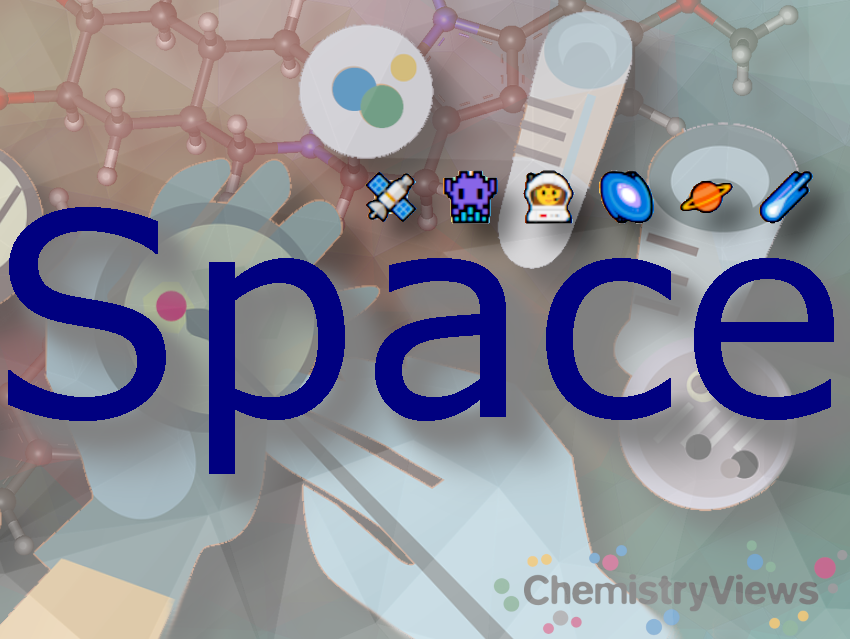Highlights from the chemistry community, with a special focus on Europe
In this section we highlight interesting articles that have recently been published in the journals and magazines of the Societies of Chemistry Europe.
This month we focus on the topic of Space and on articles published in the German magazine Chemie in Unserer Zeit, owned by the GDCh, and in ChemistryViews, owned by Chemistry Europe.
🛰️ Microorganisms on Board the ISS Space Station
Kasthuri Venkateswaran (Venkat) and Nitin Kumar Singh of NASA’s Jet Propulsion Laboratory (JPL) in Southern California, USA, are part of JPL’s Planetary Protection Group, which ensures that spacecraft meet stringent cleanliness requirements to prevent forward contamination (i.e., microbial contamination of extraterrestrial bodies by spacecraft launched from Earth) and backward contamination (i.e., extraterrestrial contamination of Earth and the Moon by sample return missions). They are also looking for extremophilic bacteria that are cultivated on the ISS to support plant growth.
🕯️ How Candles Burn in Zero Gravity
We are all familiar with the appearance of a candle flame. This behavior is easily explained by the rise – the convexity – of the less dense air heated by the combustion around the wick, which is displaced upward by the cooler, heavier air. But what happens when you put a candle flame in zero gravity? In microgravity, a very low gravity environment such as Earth orbit, there is no convexity as we are accustomed to – there is no classic “up and down”.
![]() Chemie in Unserer Zeit (in German)
Chemie in Unserer Zeit (in German)
💧 Where Did Earth’s Water Come From?
Water is one of the most common molecules in the universe. While hydrogen was created shortly after the Big Bang, the oxygen needed for water was fused much later in the stars. In the dust clouds of the interstellar medium, these elements still combine to form water. But how did water get to Earth? Either it was ejected from a disk of gas during the formation of the Earth, or it was brought to the Earth by a comet. Whether both or only one of these processes is responsible for the water on Earth is still undecided.
![]() Chemie in Unserer Zeit (in German)
Chemie in Unserer Zeit (in German)
🪐 Mars Exploration
Hopes are high for a manned Mars landing in the 2030s. The first Mars expeditions began in the 1960s. Every 26 months, Earth and Mars align so that spacecraft can make the journey in about half a year. In the summer of 2020, the United Arab Emirates, China, and the United States sent missions to Mars, marking significant milestones in exploration. Known as the Red Planet because of its iron oxide dust, Mars has the largest canyon and volcano in the solar system, as well as many other interesting features and mysteries.
🚀 Journey from the Big Bang to Element Formation
For chemists, it is a matter of course to study the chemical elements and their compounds. They do not usually ask about their origin, the different isotopes and their properties, or the reasons for their extremely different abundances. These and other exciting questions are closely related to the history of the universe. This has long been a preoccupation of many astronomical physicists. Einstein’s equation E = m c2 is the basis for the origin of the chemical elements in the universe.
![]() Chemie in Unserer Zeit (in German)
Chemie in Unserer Zeit (in German)
See more articles on this topic

Collection: Chemistry & Space
 Collection: Chemie im Weltraum
Collection: Chemie im Weltraum


